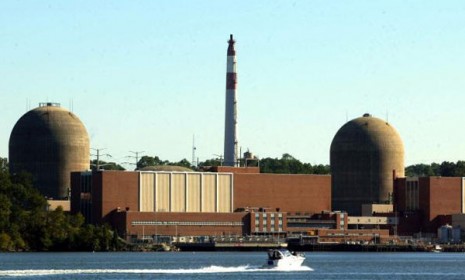America's nuclear 'near misses': Top 7 screw-ups
A new report reveals regulatory oversights at several U.S. reactors last year, and gives America's nuclear watchdog a poor grade

In the wake of Japan's battle to avert a catastrophe at its Fukushima Daiichi reactors, President Obama on Thursday ordered a "comprehensive review" of America's 104 active nuclear power plants. And that review is well past due, according to a new report from the nonprofit Union of Concerned Scientists which looks at safety flaws and regulatory oversights at U.S. nuclear plants in 2010. Written before Japan's crisis began, the report gives the Nuclear Regulatory Commission (NCR) a generally poor grade for its watchdogging of the U.S. nuclear industry. Here's a look at seven of the worst problems:
1. Peach Bottom, Delta, Pa. (Exelon)
Workers discovered that 21 "control rods," used to stop nuclear reactions, were moving too slowly to meet safety guidelines. By law, that should require a shutdown. But according to the report, the NRC knew about the problem and allowed Peach Bottom to continue operating.
The Week
Escape your echo chamber. Get the facts behind the news, plus analysis from multiple perspectives.

Sign up for The Week's Free Newsletters
From our morning news briefing to a weekly Good News Newsletter, get the best of The Week delivered directly to your inbox.
From our morning news briefing to a weekly Good News Newsletter, get the best of The Week delivered directly to your inbox.
2. Indian Point, Buchanan, N.Y. (Entergy)
Inspectors found that a steel liner designed to keep radiation from leaking out in the event of an earthquake had itself been leaking since 1993. NRC managers let the leakage slide, the report says, since no consequences had been identified. Indian Point, only 24 miles north of New York City, "should be closed," says Gov. Andrew Cuomo (D-N.Y.).
3. Vermont Yankee, Vernon, Vt. (Entergy)
Even though Entergy informed the NRC last year that a system of underground pipes was mysteriously leaking radioactive water, the watchdog organization approved a 20-year extension of Vermont Yankee's license... a day before Japan's massive earthquake.
A free daily email with the biggest news stories of the day – and the best features from TheWeek.com
4. Diablo Canyon, San Luis Obispo, Calif. (Pacific Gas & Electric)
For 18 months, PG&E operated the Diablo Canyon plant without a vital emergency system. In a bungled attempt to repair some valves, engineers accidentally prevented other crucial valves from opening; subsequent tests failed to detect the problem.
5. Brunswick, Southport, N.C. (Progress Energy)
The reactor's staff was forced to declare an emergency when some of its equipment failed, but the operation was delayed while the crew struggled to digitally alert offsite workers to report to emergency response stations.
6. Calvert Cliffs, Annapolis, Md. (Constellation Energy)
A previously identified roof leak caused two reactors to shut down automatically. First, rainwater shorted out some electrical equipment, forcing the first reactor to shut down. Then the electrical failure spread to the second reactor because — due to overzealous cost-cutting — a worn-out protective cover hadn't been replaced.
7. Wolf Creek, Burlington, Kansas (Wolf Creek Nuclear)
In a similar incident, water leaking from a cooling system triggered an automatic reactor shutdown. This serious problem was hardly unforeseen: A 2007 internal report had predicted such a leak, and a similar one had sprung after a 2008 shutdown. Wolf Creek had done little to address the problem.
Sources: Mother Jones (2), Union of Concerned Scientists (PDF, PDF), MSNBC, Huffington Post, USA Today
-
 Political cartoons for December 6
Political cartoons for December 6Cartoons Saturday’s political cartoons include a pardon for Hernandez, word of the year, and more
-
 Pakistan: Trump’s ‘favourite field marshal’ takes charge
Pakistan: Trump’s ‘favourite field marshal’ takes chargeIn the Spotlight Asim Munir’s control over all three branches of Pakistan’s military gives him ‘sweeping powers’ – and almost unlimited freedom to use them
-
 Codeword: December 6, 2025
Codeword: December 6, 2025The daily codeword puzzle from The Week